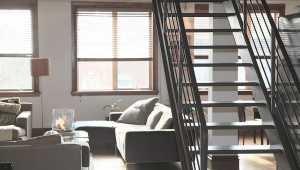
Beyond the Basics: Unleashing the Power of Language in Interior Design
So, you’ve got the basics down – a cozy sofa, some sleek lighting, and maybe even a quirky accent wall. But what about breathing life into your space with words? Interior design is not just about aesthetics; it’s also about capturing the essence of each room and communicating that feeling through language.
Words have the ability to evoke emotions, set the tone, and paint a picture in the minds of those who enter. In interior design, this power of description becomes even more impactful. It transforms vague “needs” into tangible spaces where you can truly feel at home.
Think about it: “cozy” is a good start, but what if we could describe that feeling of warmth and comfort with words like “rustic charm,” “grandmillennial elegance,” or even “sun-drenched bohemian.” These descriptions go beyond the surface level, weaving in details about texture, color, and atmosphere.
Using descriptive language isn’t just about fancy vocabulary; it’s about creating a genuine connection with your interior design. Instead of simply labeling items, delve into their specific qualities: the soft sheen of velvet against the cool wood grain of a table, or the warm glow of vintage brass accents.
The Magic of Vivid Language
Imagine stepping into a room that feels like a secret garden after rain. The breeze is gentle, rustling leaves create whispers against glass windows, and you feel a sense of tranquility wash over you. This isn’t just about the furniture; it’s about language painting a picture of what the space *feels* like.
Words hold power because they can transport us. Instead of simply saying “the living room is colorful”, describe the vivid hues: “a kaleidoscope of turquoise and teal, reminiscent of underwater meadows.” This takes you beyond the visual to evoke a feeling of vibrancy and joy.
Similarly, instead of just stating that the kitchen is “spacious”, paint a picture of its airy nature. “The kitchen stretches out before you, bathed in sunlight streaming through oversized windows. The countertops are white porcelain, reflecting both light and laughter.” This description conjures an image of open space and joyful memories.
Don’t be afraid to be creative and playful with your language. By using descriptive words like “serene” or “inviting”, you can create a specific ambiance that resonates with the intended purpose of the room.
Creating the Perfect Mood: Words as Design Tools
Think about the mood you want to evoke in each space. Your bedroom should exude relaxation and tranquility, while your office needs to be focused and energized. Words can be powerful tools for achieving this.
For example, instead of “this living room is comfortable”, try something like: “This living room is an oasis of comfort, with plush velvet sofas in a palette of calming blues and greens.” This description paints a vivid picture of the atmosphere. It also highlights specific materials and color choices.
Words can even help you define your aesthetic— whether it’s classic, modern, eclectic or something else entirely! Instead of just saying “this room is bohemian,” describe the style with words: “a kaleidoscope of global textiles, from handwoven Moroccan rugs to vibrant Indian embroidery on throw pillows. The overall feel is a harmonious blend of old and new.” This description gives your design story depth.
Words as Architects of Space
Words can also be an architect’s blueprint for spaces. Instead of just outlining the walls, describe how the shapes and elements interact: “the arched doorway feels like a portal to another world. The cascading light from above creates a sense of openness and wonder.” This description gives life to these architectural details.
Words can help in understanding scale too. Instead of just saying “this room is big,” you could add, “Stepping into this room feels like entering a cathedral. A high ceiling and expansive windows make the space feel truly boundless.”
The Power of Words: A Deeper Connection
Interior design isn’t just about aesthetics; it’s also about creating a deeper connection between you and your surroundings. Words can help communicate your story, evoke emotions, and create an atmosphere that truly feels like home.
When you use descriptive language in your interior design, you’re not just describing things – you’re sharing your vision with the world. It allows others to understand what drives your design choices, leading to a deeper connection between design and personality.



